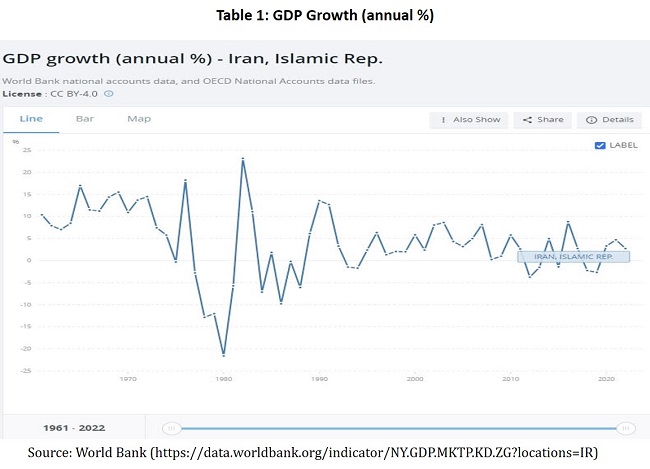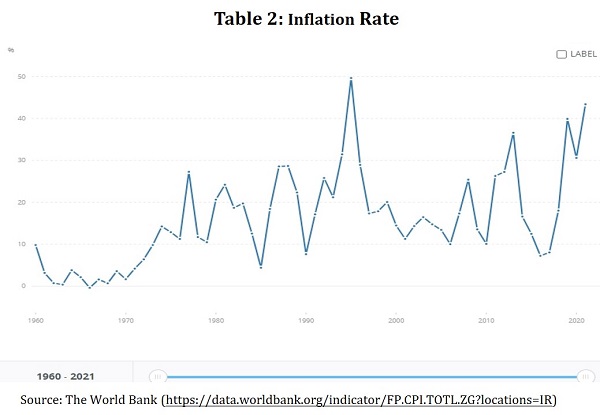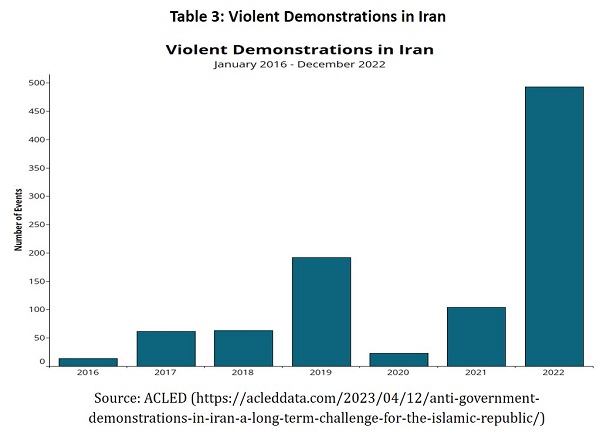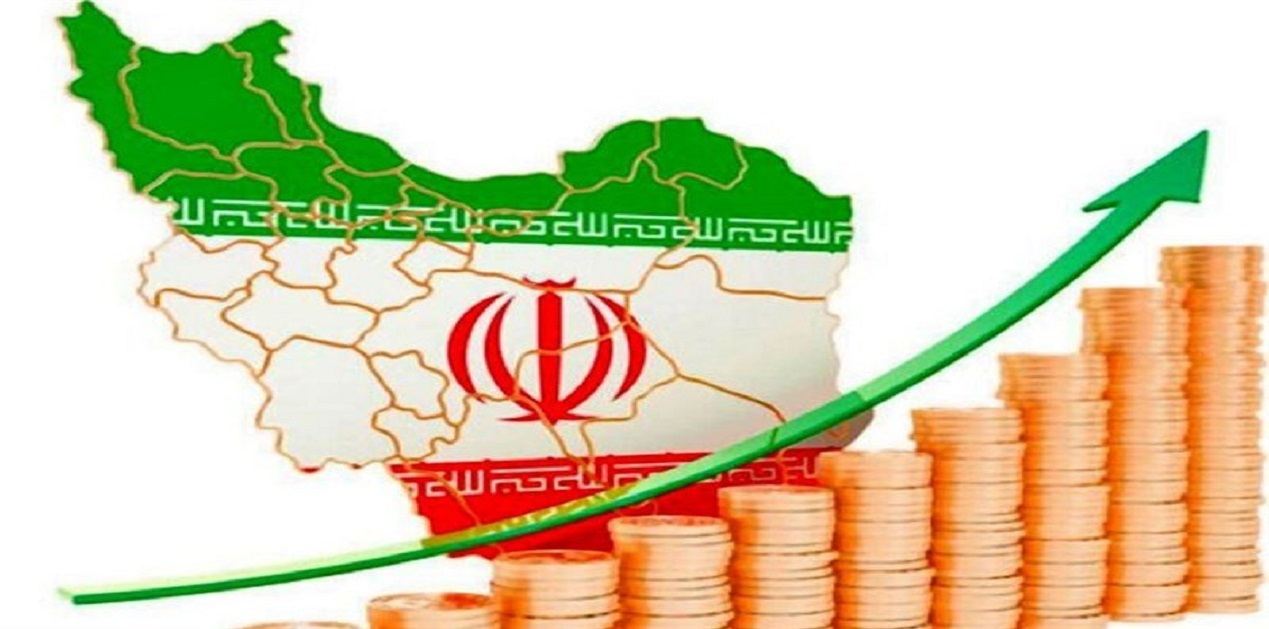The coup against Prime Minister Mohammad Mossadegh, facilitated by the United States (US), put Reza Shah Pahlavi into power, and the people in Iran lost hope of establishing democratic rule. Although progressive and westernised in some aspects, the Shah imposed strict control on the Iranian people. The 1979 Islamic Revolution that toppled the Shah established a theocratic model under Velayat-e-Faqih or the Guardianship of the Jurist led by the Supreme Leader Ruhollah Khomeini. Ayatollah Khomeini established parallel institutions to the government, which after almost four decades of the revolution, still function under the direct control of the current Supreme Leader, Ali Khamenei. With even more control over the politics and institutions, the clerical rule has established deeper roots in Iranian political culture. The regime however, has been subjected to negative reactions both domestically and internationally. The Iranian economy is crumbling, and the citizens have taken to the streets multiple times to protest the lack of basic rights and facilities. Internationally, the state has faced multiple sanction regimes over the years. These sanctions and the domestic unrest have led to several issues in the functioning of the state. The Iranian economy is growing weaker, and the protests are gathering more vigour. An increased demand for the establishment of democracy has put the regime under pressure and scrutiny, which it has to navigate to sustain its position in the region.
Economic Situation
The Iranian economy, characterised by low growth, high inflation, and currency devaluation, is considered to be volatile. After negative GDP growth for over half a decade, the economy showed signs of revival when the GDP growth was recorded as positive since the second quarter of 2021. The World Bank has predicted 2.2 percent economic growth in 2023. These predictions suggest a slow but certain shrinking of the economy.[1] The shrinking of the economy has been largely attributed to the sanctions regime imposed by the west. However, there are various underlying issues within domestic politics, such as the COVID-19 pandemic, mismanagement, and corruption, as well as the growing population, that contribute to the current economic situation.
The first set of sanctions was imposed on Iran following the 1979 hostage crisis, and the latest round was imposed in January 2023 to target the sale of Iranian drones to Russia to be employed against Ukraine. The sanctioning entities such as the US and the European Union (EU) have targeted individuals for human rights violations as well as global firms involved in ‘illegal’ oil and petrochemical trade with Iran.[2] An economy based on oil exports, sanctions on these hit Iran the most. As observed by D.P. Srivastava, the former Indian Ambassador to Iran, there has been a sloping decrease in Iranian oil exports and as of 2021, Iran exports 762.779 barrels of oil per day.[3]
Along with sanctions for the violation of human rights, and sponsorship of terrorism, Iran was put under sanctions for alleged efforts to develop a nuclear weapon. Notably, these sanctions have had a negative impact on the Iranian economy, with a fall in GDP growth, devaluation of the currency, inflation, etc. To tackle the problem and sustain the ailing economy, Iran signed a long-term deal in 2015 with the five permanent members of the United Nations (P5) and the EU called the Joint Comprehensive Plan of Action (JCPOA). Under the plan, Iran assured the limitation of its nuclear activities, while the west agreed to lift the sanctions.[4] Iranian GDP growth, that was recorded positive at 8 percent in 2017, due to the lifting of the sanctions, dropped drastically in 2018 when US President Donald Trump pulled out of the JCPOA to kick-start his ‘maximum pressure’ campaign. In the following years, i.e., 2018 and 2019, the Iranian growth rate was recorded as negative. After a two year recession, the economy revived in 2021/22.

Table 1 indicates that the GDP growth (annual %)witnessed a steep fall in 2018 which only recovered in 2021.
The COVID - 19 pandemic had a less catastrophic impact on the Iranian economy as compared to other economies in the world. The International Monetary Fund (IMF) predicted a shrinkage in the GDP, but, contrary to the prediction, it increased by 3.4 percent in 2020. This increase was credited to the recovery of oil prices, and the lack of strict lockdowns.[5] Iran also managed to carry out mass vaccination drives, and owing to that, on June 02, 2022, the health minister of Iran, Bahram Eynollahi, reported the first day with zero-COVID deaths. In his message, calling the sanctions “economic terrorism” and “medical terrorism”, Eynollahi said that the “cowardly sanctions” did not weaken Iran.[6]
Corruption is another significant problem in Iranian domestic politics, and it has impacted the economy negatively. Iran, as noted by the Transparency International report, has one of the highest rates of corruption and is plagued with nepotism and mismanagement with a score of 25 and rank of 147 as of 2022. Mohammad Sarafraz, former chief of Iranian state television, brought to light the ingrained corruption. Around 80 percent of the Iranian economy is directly or indirectly controlled by the regime, which according to Sarafraz, has created “systematic corruption which is likely to land the country in deep trouble”.[7]
The sanctions also negatively impacted the Iranian economy in terms of inflation, which often goes under-reported. The Iranian economy faces an inflation rate of 43.4 percent as of 2021, as recorded by the World Bank. [8] One of the major drivers of rising inflation is the devaluation of the Iranian Rial. Ever since the new sanction regime of 2012, the Rial has been progressively depreciating and hit its lowest in 2022, when it dropped to 335,000 against the US$.[9]

The graph above highlights the spikes in the inflation rates in Iran from 1960 to 2021.
More than two decades of sanctions, coupled with COVID-19, high rates of inflation, and currency devaluation, affected the common people the most. Unemployment rates recorded at 9.6% in 2021 along with poverty, has reduced the purchasing power of the people.[10] The Iranian economy is stuck in a loop of instability. The Iranian economy has thus far survived owing to high oil prices and its increased exports to China. However, in a speech in January 2023, Supreme Leader, Khamenei announced that Iran’s economy is a “decade behind”, thus highlighting the gravity of the situation.[11]
Insurgency and Protests
The insurgency movements and the constant protests have put Iran on the radar of the West. Protests in Iran have been a historical phenomenon, which began with people mobilising for and against Prime Minister Mossadegh. The Khamenei regime has also faced multiple protests against its policies. As these movements gain momentum, Iran is subject to more and more scrutiny at the international level. The handling of such protests by the government has tested the legitimacy of the regime, both domestically and internationally.
The outrage and protest in 2022, caused by the death of Mahsa Aminiat the hands of the mortality police and the consequent imposition of hijab, is not the first instance of people taking to the streets against the government and its institutions. The 1979 Islamic Revolution with the aim of establishing the Velayat-e-Faqih, the 2008 Green Movement against corruption and election fraud, the 2017-18 Economic Protests against the worsening economic conditions are some prime examples.[12] The economy crippled by the sanctions, could not support the people and resulted in high level of unemployment, inflation, and poverty. Iranians protested against the government in 2019 to convey their dissatisfaction with the economic management of the country. This protest came to be known as “Bloody November” due to the heavy crackdown by the Iranian authorities. The protest following Mahsa Amini’s death however is considered different from the rest due to the mass support it has garnered and the duration of the protests.[13] The Iranian authorities have cracked down heavily on the protesters with more than 500 recorded deaths, seven recorded executions and more than 20,00 detained.

The graph indicates the increase in the violent demonstrations in Iran in the 2022.
Another characteristic of the 2022 protest was the Kurdish initiative. The slogan of the protest, “Jin, Jiyan, Azadi” (Woman, Life, Freedom), has its origins in the traditional Kurdish struggle. The hostility between the Iranian Kurds and the government of Iran has been brewing for decades, and more so since the 1979 Revolution and the consequent Iran-Iraq war. Residing in the Kurdistan province along the Iran-Iraq border, this stateless ethnic minority group has been demanding the right to autonomy and self-governance. Armed Kurdish groups and government forces have been part of standoffs on multiple occasions. Perceived as a threat to its national security, the Iranian government has heavily cracked down on the Kurdish militants and equally harshly on the civilian population. As per a 2019 UN report, more than half of the political prisoners in Iran come from the Kurdish community.[14] The Kurdish provinces within Iran are heavily militarised, and overseen by the Islamic Revolutionary Guard Corps (IRGC). While addressing the unrest caused by the protest, the Iranian Interior Minister, Ahmad Vahidi, blamed the “terrorist and separatist groups” associated with the west and Israel.[15]
The protest largely faded away in 2023, with no significant demonstrations taking place. Notably, the demand for democracy and a direct opposition to the oppressive policies of the government were highlighted. The youth and minorities of Iran trying to voice their opinion and directly opposing the security forces was also evident. The protest might have lost momentum,but the seeds of resentment towards the regime have been sown, among Iranians as well as the international population.[16]
Relations with India
India and Iran share historical and civilizational ties, which have gone into strengthening economic and diplomatic ties. In this multi-polar world order, both states play a significant role in building trade and connectivity patterns across Eurasia. Factors such as the sanction regime, India’s relations with the US and other geopolitical considerations act as road-blocks to India bolstering relations with Iran.
India-Iran bilateral trade has been on the decline ever since the fallout of the JCPOA. In the financial year 2022, the aggregate trade stood at US$ 1.91 billion, which is significantly less than the previous financial year, where the aggregate trade was US$ 2.10 billion.[17] Energy trade has been the pillar of India-Iran bilateral ties, which has gone down over the years. Iran’s oil exports were heavily impacted by the sanctions, while India diversified its oil imports, thus impacting the trade. In 2022, an Indian petro-chemical trading company, Tibalaji Petrochem Pvt. Ltd. was targeted by the US Department of the Treasury, further impeding trade between Tehran and New Delhi.[18] Key areas of economic and geopolitical alignment for both states are port infrastructure as well as transit routes. Iran and India have jointly invested in the Chabahar Port off the Persian Gulf coast, and the International North-South Transport Corridor (INSTC). Despite no significant progress, both parties have shown willingness to develop the projects. Indian government has been keen on developing these due to the strategic interests these projects serve. The Indian government abstained from a UNHRC Resolution regarding violations of human rights by the Iranian regime, showcasing once again, India’s strategic autonomy. The promotional video for the Raisina Dialogue organised by the Observer Research Foundation (ORF) highlighted the Iranian protests along with the image of the Iranian President Raisi, which was displeasing to the regime. The regime did not send representatives to the Dialogue, thus causing some diplomatic friction.[19] Despite these hiccups, economic and geopolitical considerations have always superseded these differences.
The focus of the Raisi government, given the economic situation, is to foster ties with regional partners. The Russia - Ukraine crisis has paved the way for greater cooperation between Tehran, Moscow, and Beijing, which is beneficial for Iran both economically as well as geopolitically. On the other hand, India’s balancing act in West Asia, as well as engagement with the US and its allies in the I2U2 forum, could affect Iran-India ties. It needs be seen how India manages to balance its ties with the west while maintaining its historic relationship with Iran. Notably, Iran’s membership in the SCO and the visit by India’s National Security Advisor, Ajit Doval, to Iran in May 2023 highlight the scope for further engagement.[20]
Conclusion
The 1979 Revolution put Iran at odds with the west, particularly the US, which imposed a sanctions regime on the former. Over the years, the sanctions on Iran have only piled up, hitting its economy and making it vulnerable. The 2015 JCPOA gave some relief to Iran as the sanctions were lifted. The economy was recovering and on its way to stabilising. Soon after, in 2018, President Trump, as a part of his “maximum pressure” campaign, pulled out of the JCPOA, making Iran vulnerable again. Crippled by sanctions, the Iranian economy has been struggling, and it has affected the common people the most. The failing domestic economy has not been able to provide the people of Iran with a basic standard of living. Below - average standards of living coupled with a lack of basic rights, have pitted the civilians against the regime and its institutions. Additionally, Iran’s independent foreign policy, nuclear programme and legacy of the 1979 hostage crisis are some of the reasons for the constant international attention on Iran. The above-mentioned factors, namely the economy and internal unrest, have pushed Raisi to balance between his role as a regime hardliner and building Iran’s image internationally. However, Iran has found regime - neutral partners in Russia and China, giving Iran options to engage. The Iran-Saudi rapprochement and the recent Iran-US Prisoners’ swap has also added to Tehran’s regional clout. With the constantly looming question of succession, it remains to be seen how the Iranian clergy manages to navigate these domestic issues to continue to pursue its regional ambitions in West Asia.
References
[1]Tasnim News Agency, “WB Predicts Iran’s 2.2% Economic Growth in 2023”, Tasnim News Agency, June 07, 2023, at https://www.tasnimnews.com/en/news/2023/06/07/2907318/wb-predicts-iran-s-2-2-economic-growth-in-2023 (Accessed June 30, 2023).
[2]A. Macias, “U.S. Slaps Iran with Another Round of Sanctions Over Drones Used in Russia’s War on Ukraine”, CNBC, January 06, 2023 at U.S. sanctions Iran over drones used in Russia's war on Ukraine (cnbc.com) (Accessed July 03, 2023).
[3]CEIC, “Iran Crude Oil: Exports”, CEIC, 2021, at https://www.ceicdata.com/en/indicator/iran/crude-oil-exports (Accessed July 03, 2023).
[4]BBC News, “Iran Nuclear Deal: What it All Means”, BBC News, November 23, 2021, at https://www.bbc.com/news/world-middle-east-33521655 (Accessed July 03, 2023).
[5]T. Rosenberg & G. Nada, “Two Years of COVID: Economic Cost”, The Iran Primer, February 16, 2022, at https://iranprimer.usip.org/blog/2022/feb/16/two-years-covid-economic-cost (Accessed July 03, 2023).
[6]Press TV, “Cowardly Sanctions Failed: Iran Celebrates ‘Zero’ COVID-19 Deaths”, Press TV, June 03, 2022, at https://www.presstv.ir/Detail/2022/06/03/683265/Iran-health-minister-felicitates-Leader-COVID-19-deaths-hit-zero (Accessed July 03, 2023).
[7]Iran International, “Insider Explains Systematic Corruption in Iranian Government”, Iran International, December 13, 2022, at https://www.iranintl.com/en/202212136678 (Accessed July 04, 2023).
[8] The World Bank, “Inflation. Consumer Prices (Annual %) - Islamic Republic of Iran”, The World Bank, 2023, at https://data.worldbank.org/indicator/FP.CPI.TOTL.ZG?locations=IR (Accessed July 03, 2023).
[9]M. Motamedi, “Free-falling Rial Leaves Iranians Worried About Financial Future”, Aljazeera, March 02, 2023, at https://www.aljazeera.com/economy/2023/3/2/iran-rial-depriciation (Accessed July 04, 2023).
[10]CEIC, “Iran Unemployment Rate”, CEIC Data, 2023, at https://www.ceicdata.com/en/indicator/iran/unemployment-rate (Accessed October 03, 2023).
[11]The Iran Primer, “Khamenei: Iran’s Economy a Decade Behind”, The Iran Primer, February 01, 2023, at https://iranprimer.usip.org/blog/2023/feb/01/khamenei-irans-economy-decade-behind (Accessed July 04, 2023).
[12]The Iran Primer, “Fact Sheet: Protests in Iran 1979-2023”, The Iran Primer, May 30, 2023, at https://iranprimer.usip.org/blog/2019/dec/05/fact-sheet-protests-iran-1999-2019-0 (Accessed October 03, 2023).
[13]M. Ottaway& H. Esfandiari, “Public Outrage: A Look at Protest Movements in Iran and the Arab World”, The Wilson Center, October 20, 2022, at https://www.wilsoncenter.org/event/public-outrage-look-protest-movements-iran-and-arab-world (Accessed July 06, 2023).
[14]M. Berger & S. Mahoozi, “At the Center of Iran’s Uprising, Kurds Now Face a Mounting Crackdown”, The Washington Post, October 18, 2022, at https://www.washingtonpost.com/world/2022/10/18/iran-kurds-protests-mahsa-amini/ (Accessed July 10, 2023).
[15]Fars News, “Minister of Interior: Separatist Groups Are BehindSanandraj Riots”, Fars News, January 14, 2019, at https://www.farsnews.ir/kordestan/news/14010719000320/ (Accessed July 10, 2023).
[16]D. Sammy, “Anti-Government Demonstrations in Iran: A Long Term Challenge for the Islamic Republic”, ACLED, April 12, 2023, at https://acleddata.com/2023/04/12/anti-government-demonstrations-in-iran-a-long-term-challenge-for-the-islamic-republic/ (Accessed July 07, 2023).
[17]Embassy of India, “Bilateral Trade”, Embassy of India, Tehran, 2023, at https://www.indianembassytehran.gov.in/eoithr_pages/Mjg5 (Accessed on July 22, 2023).
[18]N. A. Moonakal, “The Challenges and Limitations in India-Iran Relations”, The Diplomat, October 27, 2022, at https://thediplomat.com/2022/10/the-challenges-and-limitations-in-india-iran-relations/ (Accessed July 23, 2023).
[19]S. Siddiqui, “Iran-India Ties Strained by Geopolitics, Buoyed by Economics”, Al-Monitor, March 10, 2023, at https://www.al-monitor.com/originals/2023/02/iran-india-ties-strained-geopolitics-buoyed-economics (Accessed July 23, 2023).
[20]N. A. Moonakal, “The Challenges and Limitations in India-Iran Relations”, The Diplomat, October 27, 2022, at https://thediplomat.com/2022/10/the-challenges-and-limitations-in-india-iran-relations/ (Accessed July 23, 2023).
(The paper is the author’s individual scholastic articulation. The author certifies that the article/paper is original in content, unpublished and it has not been submitted for publication/web upload elsewhere, and that the facts and figures quoted are duly referenced, as needed, and are believed to be correct). (The paper does not necessarily represent the organisational stance... More >>
Image Source: https://media.tehrantimes.com/d/t/2023/03/10/4/4458868.jpg?ts=1678440015228










Post new comment